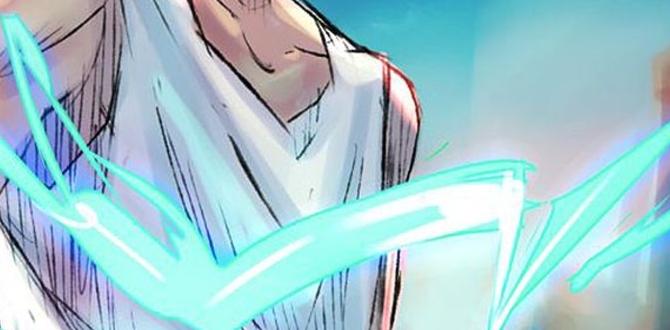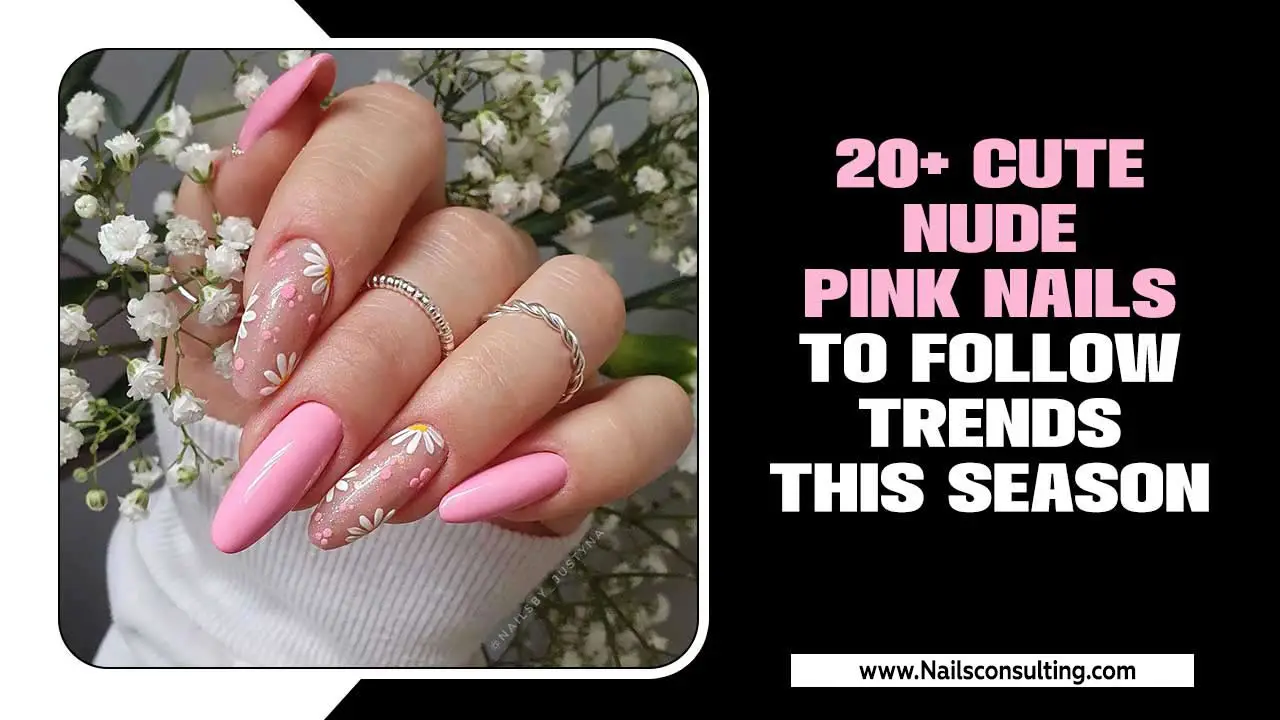Quick Summary:
Discover essential niche creative design strategies perfect for educators. Learn to craft unique visual materials that engage students, simplify complex topics, and foster a love for learning through expertly designed resources.
As educators, we’re always looking for fresh ways to capture our students’ attention and make learning absolutely sparkle. Sometimes, the perfectly designed visual can be the key to unlocking understanding and igniting curiosity. But where do you start when you want to create something truly special? It can feel a bit overwhelming, right? Don’t worry! This guide is here to show you exactly how to harness the power of niche creative designs, transforming your teaching materials from ordinary to extraordinary. Get ready to make your lessons unforgettable!
Why “Niche Creative Designs” Matter for Educators
In today’s visually driven world, standing out is more important than ever, especially in education. Traditional teaching methods often rely on text-heavy materials, which can sometimes fall flat. “Niche creative designs” are all about tailoring visuals to a very specific purpose or audience within education. Think about it: a science teacher might need designs that illustrate complex biological processes, while a kindergarten teacher might need playful, colorful graphics for phonics. These aren’t just pretty pictures; they’re strategic tools that speak directly to a particular learning need.
These designs leverage a deep understanding of the target audience and the subject matter to create materials that are not only aesthetically pleasing but also highly effective. They cut through the noise, making information more digestible, memorable, and engaging. When done right, niche designs can significantly boost student comprehension, retention, and overall enthusiasm for learning. They empower educators to communicate more effectively and create a richer learning environment.
Understanding Your Audience
The first, and arguably most crucial, step in creating effective niche designs is to deeply understand your audience. Who are you trying to reach? What are their existing knowledge levels? What are their learning styles? What captures their attention?
- Age and Developmental Stage: A design for kindergartners will look vastly different from one for high schoolers. Consider their cognitive abilities, interests, and attention spans.
- Subject Matter Familiarity: Are you introducing a new concept or reinforcing an existing one? The design should complement the student’s current understanding.
- Learning Preferences: Some students are visual learners, others auditory, and some kinesthetic. Designs should aim to support visual learners directly, but also make abstract concepts tangible for others.
- Cultural Background: Ensure your designs are inclusive and avoid any imagery or themes that could be misinterpreted or alienating.
Defining Your Design “Niche”
What makes a design “niche”? It’s about specificity. Instead of a generic “math poster,” a niche design might be: “A visually-driven flowchart explaining quadratic equations for struggling algebra students,” or “A set of illustrated flashcards depicting historical figures for a 5th-grade social studies class.”
Your niche can be defined by:
- The Subject Area: STEM, humanities, arts, languages, etc.
- The Specific Topic: Photosynthesis, the water cycle, Shakespearean sonnets, coding basics.
- The Learning Objective: Memorization, problem-solving, critical thinking, creativity.
- The Format: Infographics, interactive worksheets, digital presentations, physical classroom decor.
Proven Essentials for Niche Creative Design Success
Crafting effective niche designs isn’t magic; it’s a blend of strategic thinking and practical application. Here are the proven essentials that will guide you:
1. Clarity and Simplicity
Even with creative flair, the core purpose of any educational design is to convey information clearly. Overly complex or cluttered designs can confuse students, defeating the purpose. Simplicity ensures that the message remains the focus.
- Keep it clean: Use ample white space to prevent clutter.
- Focus on one key message: If a design needs to communicate multiple things, consider breaking it into a series.
- Legible fonts: Choose fonts that are easy to read from a distance or on a screen. Sans-serif fonts are often preferred for digital and display purposes.
2. Visual Hierarchy
Not all elements on a page or screen are created equal. Visual hierarchy guides the viewer’s eye through the design, highlighting the most important information first. This is crucial for effective learning.
How to achieve it:
- Size: Larger elements naturally attract more attention. Use this for titles or key concepts.
- Color: Use contrasting colors for important information or to group related elements. Be mindful of accessibility and avoid color combinations that are difficult for those with color vision deficiencies to distinguish. Organizations like the CDC offer great resources on accessibility.
- Placement: Items placed higher or centrally tend to be viewed first.
- Typography: Varying font weights (bold, regular) and styles can differentiate elements.
3. Color Psychology and Application
Color is a powerful tool. It can evoke emotions, create associations, and improve information recall. For educational designs, strategic color use is vital.
| Color | Potential Associations | Use Cases |
|---|---|---|
| Blue | Calm, trust, stability, intelligence | Science, technology, history, calming spaces |
| Green | Growth, nature, health, balance | Biology, environmental studies, calm focus |
| Red | Energy, passion, urgency, warning (use sparingly) | Attention-grabbing elements, key action items, emergency procedures |
| Yellow | Optimism, creativity, warmth, attention | Highlighting key points, encouraging creativity, happy learning environments |
| Orange | Enthusiasm, creativity, fun | Art, creative projects, engaging younger learners |
| Purple | Royalty, creativity, wisdom | Arts, literature, higher-level thinking topics |
Tip: Always ensure your color choices meet contrast ratio standards for accessibility. You can find many free online tools to check this.
4. Typography as a Design Element
Fonts aren’t just for reading; they’re for feeling. The right font choice can set the tone for your entire design. A playful serif font might be perfect for a literature-based lesson, while a clean sans-serif is often ideal for STEM subjects.
Key considerations:
- Readability: This is paramount. Choose fonts that are easy to read for your intended audience.
- Personality: Does the font feel serious, fun, academic, or creative? Match it to your subject and tone.
- Consistency: Stick to one or two font families for a cohesive look. A common practice is to use one font for headings and another for body text.
- Avoid: Overly decorative or script fonts for large blocks of text, as they can become illegible.
5. Imagery and Iconography
Well-chosen images and icons can simplify complex ideas, break up text, and make learning more engaging. They act as visual cues, helping students connect with and remember information.
- Relevance: Ensure all visuals directly support the content.
- Quality: Use high-resolution images and clean, professional icons. Low-quality visuals can detract from the design.
- Consistency: Maintain a consistent style for icons and illustrations throughout your materials.
- Diverse Representation: Show a range of people and situations to reflect your diverse student body.
For free, high-quality stock images, sites like Unsplash or Pexels are excellent resources. For icons, consider resources like Flaticon or the Noun Project, which offer vast libraries.
6. Layout and Composition
How elements are arranged on a page or screen significantly impacts how information is processed. A well-composed layout is intuitive and guides the learner effortlessly.
Essential layout principles:
- Alignment: Use consistent alignment (left, right, center) to create order and a professional look.
- Proximity: Group related items together. This helps students understand relationships between different pieces of information.
- Repetition: Repeat design elements (colors, fonts, shapes) to create unity and a consistent feel.
- Contrast: Use contrast to make elements stand out and guide attention.
7. Infographic Design Principles
Infographics are a fantastic tool for niche creative design in education. They present complex information in a visually appealing and easy-to-understand format. They often combine data, text, and visuals effectively.
Key elements of effective infographic design:
- A Clear Narrative: Infographics should tell a story or explain a process logically.
- Data Visualization: Use charts, graphs, and icons to represent data, not just text.
- Concise Text: Keep text brief and to the point. Use headings and bullet points to break up information.
- Brand Consistency: If you’re part of a school or district, use their colors and logo where appropriate.
Tools like Canva or Piktochart offer templates that can make creating infographics much more accessible, even for beginners.
8. Interactivity and Engagement
Niche designs can go beyond static images. For digital learning environments, incorporating interactive elements can dramatically boost engagement.
Ideas for interactive designs:
- Clickable elements: Links to additional resources or definitions.
- Quizzes and polls: Embedded within presentations or worksheets.
- Drag-and-drop activities: For digital platforms.
- Animated diagrams: To show processes in motion.
These elements require more technical know-how or specific tools, but their impact on student participation can be immense.
9. Accessibility Considerations
This is a non-negotiable essential for educators. Your creative designs must be accessible to all students, regardless of ability.
Key accessibility points:
- Color Contrast: Ensure sufficient contrast between text and background colors. Tools can help you verify this.
- Alt Text for Images: For digital content, always provide descriptive alt text for images so screen readers can interpret them.
- Keyboard Navigation: If creating interactive digital elements, ensure they can be navigated using a keyboard alone.
- Clear Language: Use simple, direct language. Avoid jargon where possible.
- Font Choice: As mentioned, choose fonts that are highly readable.
Understanding accessibility standards is crucial. The Web Content Accessibility Guidelines (WCAG) provide comprehensive information.
Practical Tools for Niche Design Creation
You don’t need to be a professional graphic designer to create impressive niche educational materials. Many user-friendly tools are available, catering to various skill levels.
| Tool Name | Primary Use | Ease of Use | Key Features for Educators |
|---|---|---|---|
| Canva | All-in-one design platform | Beginner-friendly | Vast library of templates (infographics, posters, worksheets, presentations), drag-and-drop interface, stock photos, icon library. |
| Adobe Express (formerly Adobe Spark) | Graphics, web pages, short videos | Beginner-friendly | Easy-to-use templates, access to Adobe’s font and image library, good for social media-style educational posts. |
| Google Drawings/Slides | Simple graphics, presentations | Beginner-friendly | Free, collaborative, easy to insert images and shapes, good for basic diagrams and layouts. |
| Procreate (iPad) | Digital illustration and painting | Intermediate to Advanced (but easier than Photoshop) | Excellent for custom illustrations, hand-drawn elements, unique artistic designs, requires an iPad and Apple Pencil. |
| Figma | UI/UX design, complex layouts | Intermediate to Advanced | Powerful for creating interactive prototypes, wireframes, and highly polished digital interfaces, free tier available. |
When choosing a tool, consider your budget, your technical comfort level, and the types of designs you plan to create most often.
Niche Design Examples for Different Subjects
Let’s dive into some specific examples to see niche creative designs in action:
1. Science: The Water Cycle Infographic
Instead of a textbook diagram, imagine a vibrant infographic for elementary students. It could feature friendly cartoon water droplets traveling through each stage: evaporation (sun icon), condensation (cloud icon), precipitation (raining umbrella icon), and collection (lake icon). Each stage would have a short, simple description. Consistent color-coding (e.g., blue for water, yellow for sun, grey for clouds) would reinforce the concepts.
2. History: Timeline of Ancient Civilizations
For middle schoolers, a visually rich, interactive timeline could be presented. Instead of a linear list, it could resemble a flowing river or a winding road. Each major civilization (Sumer, Egypt, Greece, Rome) could be represented by a distinct visual style or color, with key events marked by icons. Clicking on an icon could reveal a brief pop-up with a date, a fact, and a relevant image. This makes the vastness of history more manageable and visually interesting.
3. Language Arts: Character Map for a Novel
For high school English students studying a complex novel, a character relationship map would be invaluable. This would be a visually organized chart with main characters at the center, connected by lines indicating their relationships (e.g., “friend,” “enemy,” “family”). Different line styles or colors could represent the nature of the relationship (positive, negative, complex). Key symbols or small profile images could also be used for each character. This helps students navigate intricate plots and character dynamics.
4. Math: Visualizing Fractions with Art
For younger students struggling with fractions, designs could transform abstract numbers into tangible art. For example, a colorful pie chart showing 1/2, 1/4, and 3/4 could be designed to look like a pizza or a cake. Geometric shapes like squares and triangles could be divided and shaded to represent common fractions, presented in a way that feels more like a puzzle or a game than a math problem.
5. Early Childhood: Phonics Sound Wall
A “Sound Wall” in a kindergarten classroom is a perfect niche design. Instead of just letters, it would have visuals associated with each sound (e.g., a picture of a cat for the ‘c’ sound, a picture of an apple for the ‘a’ sound). The wall itself could be decorated with playful fonts and bright, engaging graphics, often organized by sound families. This turns early literacy into an interactive visual discovery.
Common Pitfalls to Avoid
Even with the best intentions, some common mistakes can undermine your niche creative designs:
- Over-designing: Too many elements, colors, or fonts can overwhelm and confuse.
- Ignoring Accessibility: Designs that are difficult to see or read for some students exclude them from learning.
- Lack of Focus: Trying to convey too much information in one design.
- Poor Quality Visuals: Blurry images or generic clipart can make your materials look unprofessional.
- Inconsistent Style: Using a chaotic mix of fonts, colors, and graphic styles across your materials.
Integrating Niche Designs into Your Teaching Workflow
Making niche creative design a regular part of your teaching doesn’t have to be an added burden. Here are ways to integrate it smoothly:
- Start Small: Identify one area of your lessons where a visual would make a big difference. Create a single infographic, diagram, or poster.
- Leverage Templates: Use design tools that offer pre-made templates as a starting point.
- Collaborate: Talk to colleagues. Do you have a fellow educator who’s great with design? Can you share resources or brainstorm ideas?
- Time Blocking: Dedicate a small amount of time each week (e.g., 30 minutes) specifically for design work.
- Repurpose and Adapt: Once you create a successful design, adapt it for different contexts or grade levels.




